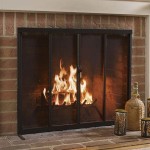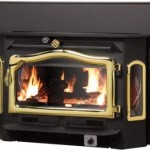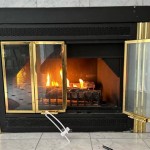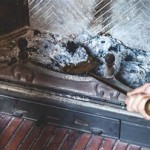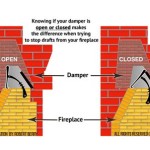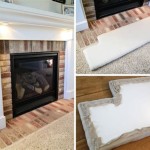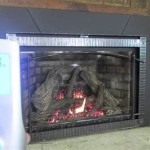Propane Tank Considerations for Gas Fireplaces
Gas fireplaces provide a convenient and aesthetically pleasing alternative to traditional wood-burning fireplaces. They offer instant ignition, adjustable heat output, and require minimal maintenance. While natural gas is a common fuel source for these fireplaces, propane is a viable, and often preferred, option for homes without access to a natural gas line or for those desiring greater fuel independence. This article explores the considerations surrounding the use of propane tanks to fuel gas fireplaces, covering sizing, safety, installation, and maintenance.
Propane Tank Sizing and Capacity
Selecting the appropriate propane tank size is paramount to ensuring uninterrupted operation of a gas fireplace and avoids frequent refills. Several factors influence the ideal tank size, including the fireplace's BTU (British Thermal Unit) rating, the frequency of use, and the desired duration between refills. A BTU rating indicates the amount of heat the fireplace produces per hour. Higher BTU ratings translate to greater fuel consumption.
To determine the appropriate tank size, it is necessary to estimate the fireplace's propane consumption. A typical residential gas fireplace consumes between 20,000 and 40,000 BTUs per hour. To calculate the estimated hourly propane consumption in gallons, divide the BTU rating by 91,500 (the approximate BTU content of one gallon of propane). For example, a 30,000 BTU fireplace will consume roughly 0.33 gallons of propane per hour (30,000 / 91,500 = 0.33).
Next, estimate the number of hours the fireplace will be used per week or month. Multiplying the hourly propane consumption by the number of usage hours provides an estimate of propane consumption for that period. Based on this estimate, a propane tank size can be selected to meet the demand. Propane tanks come in various sizes, typically measured in gallons. Common residential tank sizes include 120-gallon, 250-gallon, 500-gallon, and 1000-gallon tanks. However, it's important to note that propane tanks are typically filled to 80% of their capacity to allow for expansion.
A 120-gallon tank (approximately 96 gallons of usable propane) might be sufficient for occasional use of a small fireplace. However, for frequent use or larger fireplaces, a 250-gallon or larger tank is recommended. A 500-gallon or 1000-gallon tank offers the greatest autonomy and reduces the frequency of refills, particularly in regions with extended heating seasons. Factors such as the size of the home and the use of propane for other appliances (e.g., water heater, stove) should also be considered when determining the appropriate tank size.
Consultation with a qualified propane supplier is highly advisable. Suppliers can assess individual needs, provide accurate consumption estimates based on local climate and usage patterns, and recommend the optimal tank size. Furthermore, they can advise on delivery schedules and pricing plans.
Safety Considerations for Propane Tank Installation and Usage
Propane is a flammable gas, thus adhering to strict safety guidelines during installation and usage is crucial to prevent leaks, fires, and other hazards. Prior to installation, a qualified technician must conduct a site assessment to determine the optimal location for the tank, complying with all applicable local and national codes. These codes typically dictate minimum distances from buildings, property lines, and potential sources of ignition.
Propane tanks can be installed above ground or underground. Above-ground installations are generally less expensive and easier to maintain, but they may be visually less appealing. Underground installations offer aesthetic advantages and protection from the elements but require more extensive excavation and specialized installation procedures. Regardless of the installation method, the tank must be placed on a stable, level surface, such as a concrete pad or compacted gravel base. This prevents settling and ensures proper functioning of the tank's safety valves.
All connections must be leak-tested after installation to ensure the system is airtight. Leak testing is typically performed using a soapy water solution applied to all fittings. The presence of bubbles indicates a leak, which must be promptly addressed by a qualified technician. Proper ventilation around the tank is also essential, especially for above-ground installations. Obstructions that could impede airflow should be avoided.
Regular inspections of the propane tank and associated components are necessary to identify and address potential problems. These inspections should include checking for signs of rust, corrosion, leaks, and damage to the tank's valves and regulators. A professional inspection by a certified propane technician is recommended at least once a year. Carbon monoxide detectors should be installed in the home, particularly near the fireplace, to provide early warning of carbon monoxide leaks. Propane itself is odorless, so a distinct odorant (usually ethyl mercaptan) is added to allow for leak detection. If a propane odor is detected, immediately evacuate the premises and contact the propane supplier or fire department.
Furthermore, it is imperative to understand and follow proper procedures for lighting and extinguishing the gas fireplace. Always consult the manufacturer's instructions for specific operating guidelines. In the event of a power outage, know how to manually shut off the gas supply to the fireplace. Keep the area around the fireplace clear of flammable materials such as curtains, furniture, and newspapers. Children and pets should be supervised near the fireplace at all times.
Propane Tank Maintenance and Refilling
Proper maintenance of the propane tank and its associated components extends the lifespan of the system, improves its efficiency, and enhances safety. Regular cleaning of the tank's exterior is beneficial to prevent the buildup of dirt and debris, which can contribute to corrosion. Periodically inspect the regulator for signs of wear or damage. The regulator controls the gas pressure flowing to the fireplace and is a critical safety component. A malfunctioning regulator can cause over-pressurization, which can be dangerous.
The propane tank should be refilled before it is completely empty to prevent air and moisture from entering the tank. Air and moisture can contaminate the propane and compromise its combustion efficiency. It is also essential to monitor the tank's pressure gauge to ensure it is operating within the normal range. A sudden drop in pressure could indicate a leak.
Selecting a reliable propane supplier ensures timely and dependable refills. Many suppliers offer automatic delivery services, which monitor propane levels and schedule refills as needed. This eliminates the need for manual monitoring and ensures a continuous supply of fuel. Prior to each refill, the supplier should inspect the tank and its components to identify any potential problems. Post-refill, the supplier should conduct a leak test to confirm the integrity of the system.
In addition to regular maintenance, it is important to address any issues promptly. If you notice any unusual noises, smells, or performance problems with the fireplace, contact a qualified technician for inspection and repair. Attempting to repair the propane tank or its components without proper training and certification can be hazardous.
Over time, propane tanks may require recertification or replacement. Propane tanks are typically required to be recertified every 12 years to ensure they meet safety standards. This involves a thorough inspection by a certified technician. If a tank is deemed unsafe or is nearing the end of its lifespan, it should be replaced with a new tank that meets current safety regulations. Disposing of an old propane tank requires careful handling and should be performed by a qualified professional. Never attempt to dispose of a propane tank yourself, as it may contain residual propane and pose a safety hazard.

Propane Plus Tank Sizes Above Or Underground Installation

Lpg Gas Fires What You Need To Know Direct Fireplaces

Residential Propane Tanks What Size Tank Do You Need

What Size Propane Tank Is Right For My Home Pitstop And Fuels

Used Propane Tank Fireplace Diy Wood Stove Gas Bottle Burner Steel Fire Pit

20 Lb Propane Tank New For Bbq Or Firetables Pre Filled Bourlier S Barbecue And Fireplace

Is A Propane Tank Fire Pit Right For You Yard Couture

20 Lb Vs 30 Propane Tank Which Is Better

Propane Fireplace Installation Bucks County Gastec

Free Propane Tank Installation For Gas Fireplaces Kauffman

